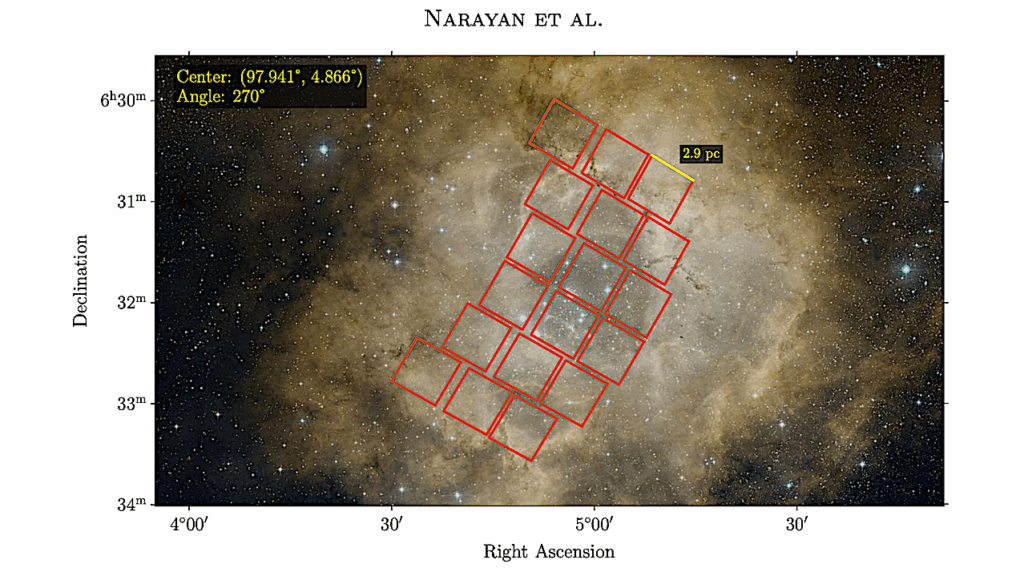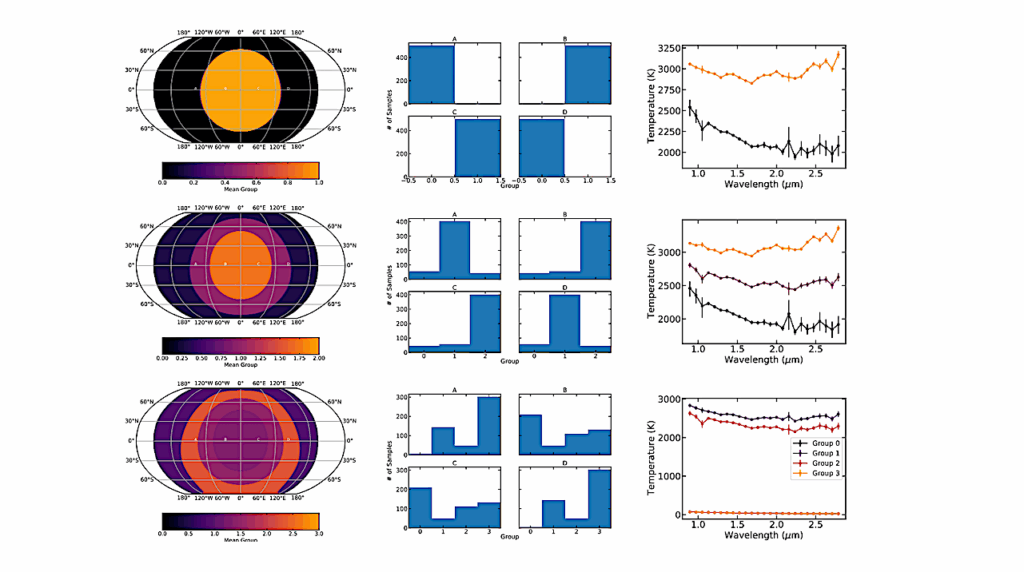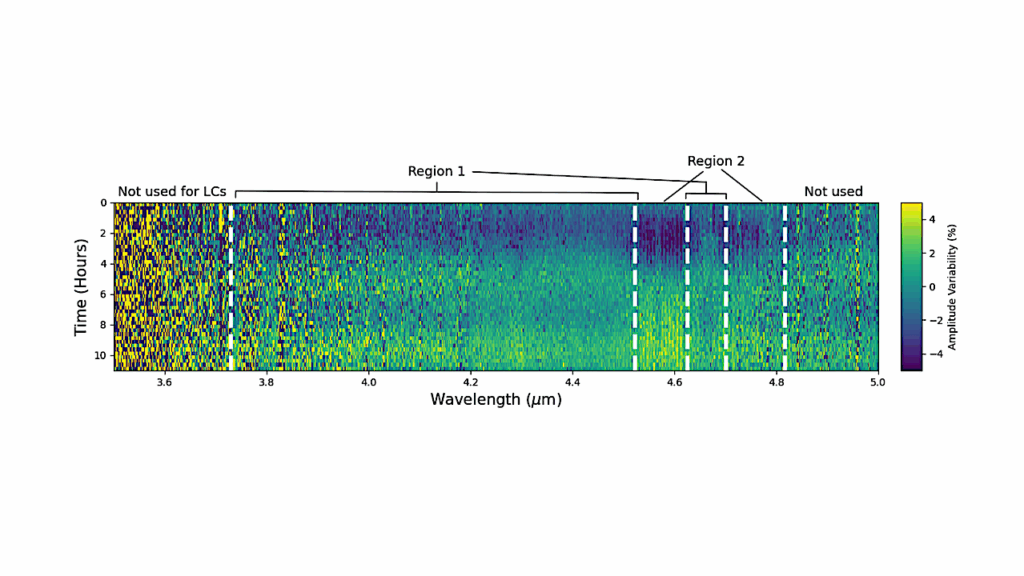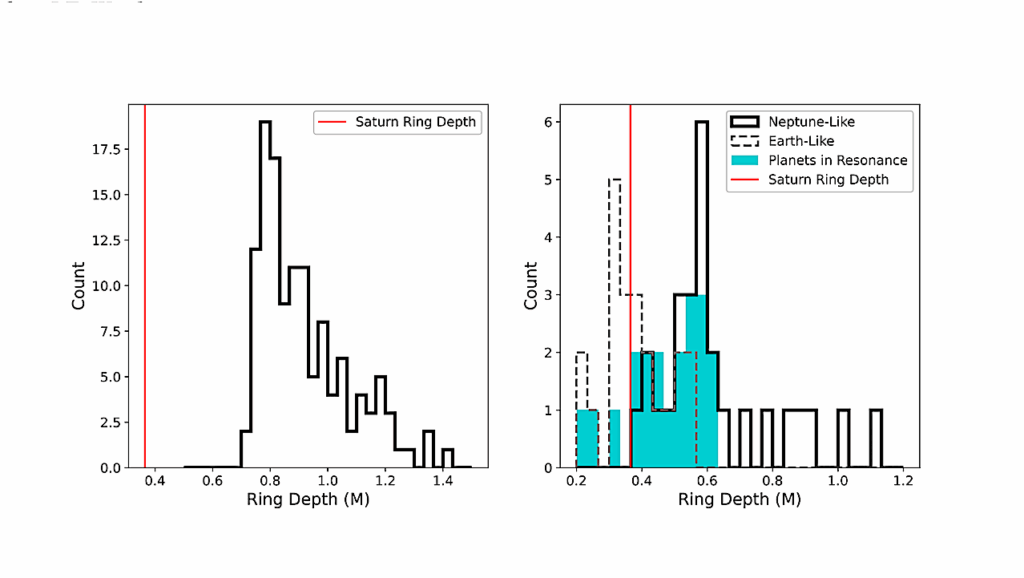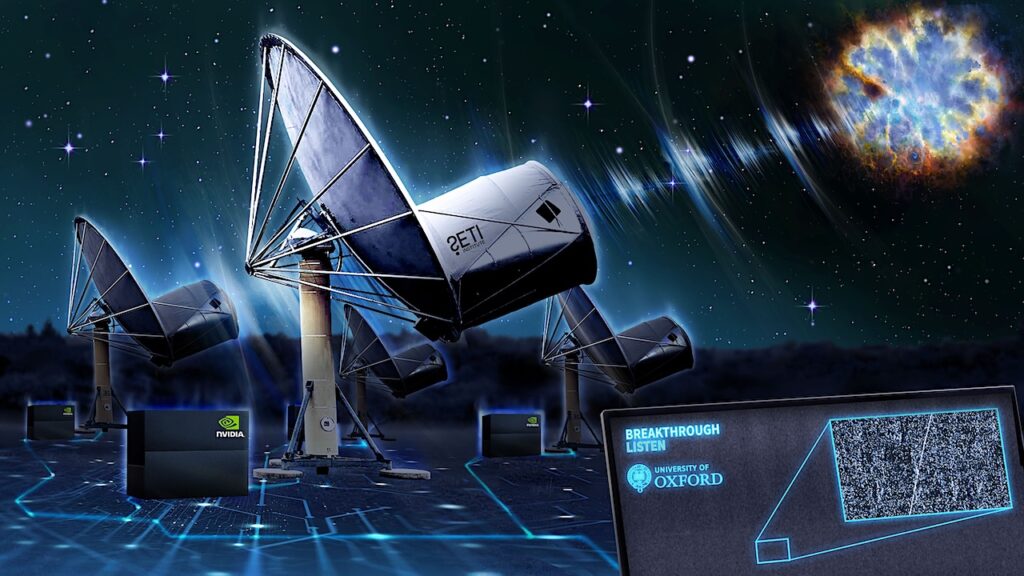Evidence for Variable Accretion Onto PDS 70 c and Implications for Protoplanet Detections
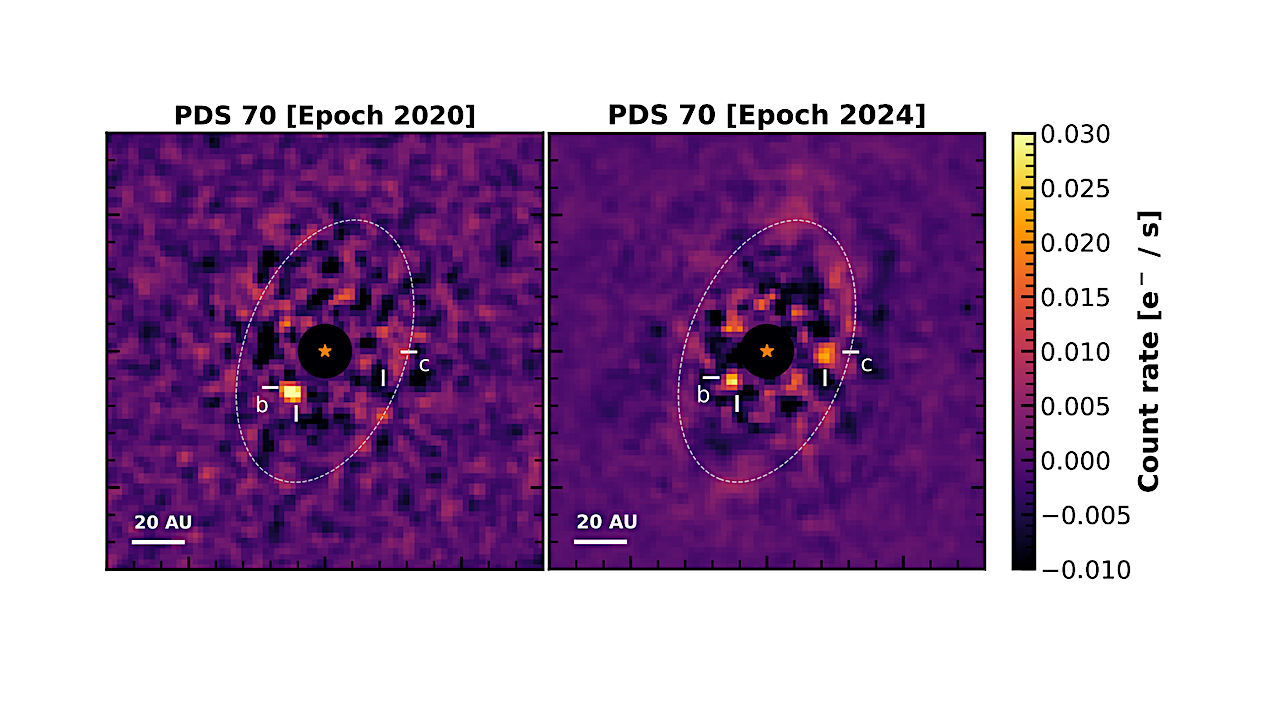
Understanding the processes of planet formation and accretion in young systems is essential to unraveling the initial conditions of planetary systems.
The PDS 70 system, which hosts two directly imaged protoplanets, provides a unique laboratory for studying these phenomena, particularly through H-alpha emission a commonly used accretion tracer. We present multi-epoch observations and examine the variability in accretion signatures within this system, focusing on PDS 70 b and c.
Using Hubble Space Telescope narrowband H-alpha imaging from 2020 and 2024, we achieve high signal-to-noise ratio detections of these planets and reveal significant changes in H-alpha flux. For PDS 70 c, the H-alpha flux more than doubled between 2020 and 2024. The trend is consistent with the one identified in recently published MagAO-X data, further confirming that PDS 70 c has become significantly brighter in H between 2023 March and 2024 May.
The observed variability suggests dynamic accretion processes, possibly modulated by circumplanetary disk properties or transient accretion bursts. High-amplitude variability in PDS 70 c motivates simultaneous monitoring of multiple accretion tracers to probe the mechanisms of mass growth of gas giant planets.
We quantify the impact of variability on the detectability of protoplanets in imaging surveys and emphasize the need for continued and regular monitoring to accurately assess the occurrence and characteristics of young, forming planets.
Yifan Zhou, Brendan P. Bowler, Aniket Sanghi, Gabriel-Dominique Marleau, Shinsuke Takasao, Yuhiko Aoyama, Yasuhiro Hasegawa, Thanawuth Thanathibodee, Taichi Uyama, Jun Hashimoto, Kevin Wagner, Nuria Calvet, Dorian Demars, Ya-Lin Wu, Lauren I. Biddle, Sebastiaan Haffert, Marta L. Bryan
Comments: See Figure 1 for new HST/WFC3 detections of PDS 70 b and c, Figures 2 and 3 for confirming the H-alpha variability of PDS 70 c. Published on ApJ Letters
Subjects: Earth and Planetary Astrophysics (astro-ph.EP)
Cite as: arXiv:2502.14024 [astro-ph.EP] (or arXiv:2502.14024v1 [astro-ph.EP] for this version)
https://doi.org/10.48550/arXiv.2502.14024
Focus to learn more
Related DOI:
https://doi.org/10.3847/2041-8213/adb134
Focus to learn more
Submission history
From: Yifan Zhou
[v1] Wed, 19 Feb 2025 19:00:00 UTC (679 KB)
https://arxiv.org/abs/2502.14024
Astrobiology,



